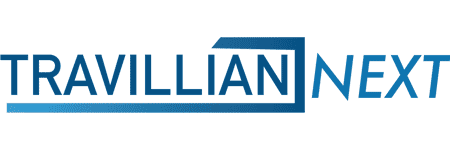From the lens of an astute and forward-thinking balance sheet strategist, the root cause of the crisis goes beyond interest rate risk. This observation comes from none other than Scott Hildenbrand, Chief Balance Sheet Strategist at Piper Sandler, who engaged in an electrifying discussion with Travillian’s Brian Love, Head of Banking & Fintech, and Indra Elangovan, Head of Strategic Advisory.
Scott revealed the intricacies of the balance sheet that work for today’s world of banking, addressing changes in customer behavior and products. Scott shares his insightful perspectives on large banks versus small banks and the government’s mode of operation for uninsured deposits.
How has the CFO role changed and adapted to meet the new challenges? As a strategic thinker, he notes the CFO role should look very different from the banking world we grew up in. Scott shares his short-term and long-term perspectives on the M&A environment, the challenges from a regulatory standpoint and his expectations for greater scrutiny on liquidity from examiners.
Discover compelling insights that surfaced from this engaging conversation.
Video Index
2:56 | Are the big banks safer and stronger after all compared to the smaller community?
5:23 | ICBA denounced the statement from the treasury secretary yesterday saying that they would bail out banks that are systemically riskier than the community banks, and they are now prone to take more risk. What are your thoughts on that?
7:29 | There’s not been a lot of outflows at a lot of these smaller banks. In fact, you’re hearing some great stories of inflows. Because the Silicon Valley bank depositors need to go somewhere and they need to bank. I think there’s some good news that may come out of this. Do you agree with that?
10:10 | Is it possible that some banks may be a little bit outmatched with some of these macro issues? Do you feel like some of these banks will need to up their game in talent or skillset? And does this change what a CFO may need to look like in the future?
13:12 | In terms of M&A, higher interest rates mean higher hits to buyer bank’s tangible book and higher credit marks with increasing potential recessionary risk. Can we expect the M&A headwinds caused by rising interest rates and corresponding interest rate marks on both the loans and securities to further exacerbate with increased regulatory scrutiny?
16:11 | Scott, you mentioned the financial collapse from 2008. To your M&A point, I also feel like people have been through that collapse. They were through Covid, now they’re through this weekend of terror. That might prompt some folks that are maybe aging out to say, all right, enough is enough. I have to get down to Florida and retire here.
17:19 | Do you think this may be expedites some people’s notion once the dust settles once again?
What’s the playbook going forward and how will risk management evolve in terms of hedging strategies and balance sheet management?
22:37 | Given the magnitude of the uninsured deposits and concentrations in niche industries, could we see an explicit guarantee around uninsured deposit protection, not just an implicit guarantee based on the two most recent failures?
Travillian’s Banking and FinTech Practice provides Search and Talent Advisory services to depository institutions across the country. Established in 1998, the firm has built a unique platform that touches every corner of the industry. To learn more, click here, or get in touch below!
|
Brian Love, Head of Banking & Fintech
(484) 680-6950 | blove@travilliangroup.com |







